Following on from the recent return to my Napoleonic Cavalry Project, I’m continuing the momentum with a kit that I’ve had lying around for a few years now; HaT’s Napoleonic Swedish Cavalry.
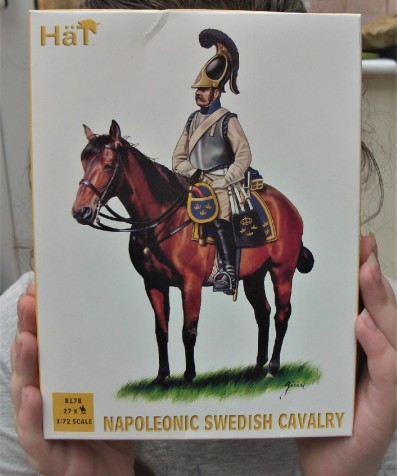
Actually it’s ‘kits’ (plural) rather than kit (singular) as I’m attempting two packs of the same set. The reason being that the set contains not one but five different examples of cavalry regiments. It’s a remarkable approach; to have so many different examples of troop types within one box. Furthermore, it’s unusual also that the set is produced with specific rather than generic regiments in mind. Although there is nothing recorded on the box, according to Plastic Soldier Review, HaT’s Swedish cavalry contains the following regiments pictured illustrated below on the back of the box:
- Royal Lifeguard (middle top row)
- Scanian Carabiniers (1st and 2nd figures, top row)
- Skjöldebrand Cuirassier (4th figure from left, top row)
- Småland Light Dragoons (last figures on 1st and 2nd rows)
- Von Mörner Hussars (first three figures 2nd row)
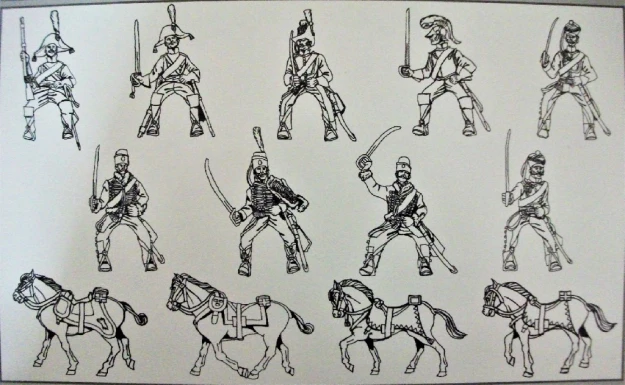
Some of these regiments are represented by only a few figures per box (the Royal Lifeguard and the cuirassiers); others by half a dozen (the Light Dragoons and Carabiniers); whilst the “Von Mörner Hussars” given a more generous nine. Buying a second box has therefore allowed me to double the size of these regiments into a more respectable amount.
I can announce that the first Swedish cavalry regiment that I’m attempting (and the 27th in the Nappy Cavalry Project) is the Mörner Hussar Regiment, (Mörnerska husarregementet) the most numerous regiment with 18 figures from the two boxes.
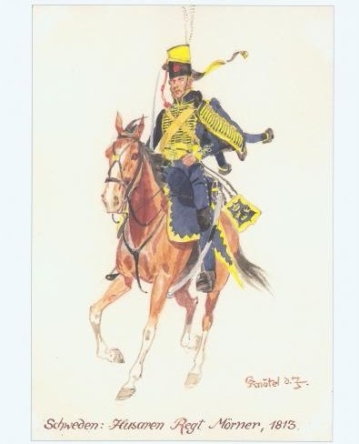
Two of the hussar figures wear their fur-lined pelisse, the other having it over the left shoulder. This figure also has the distinction of wearing a ‘streamer’ attached to their mirleton hat. The other two have it wrapped around the hat instead and doubtless, therefore, less of a nuisance.
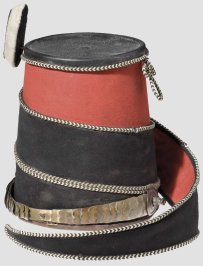
The Mirleton hat is the first one attempted in the project. It was also known as the Flügelmütze or Flügelkappe and was another piece of typically outrageous hussar dandyism. It came into fashion around 1750 but by the turn of the century was becoming obsolete or ‘old hat’, if you will. The fact the Swedish hussars still employed this headgear in the Napoleonic period was a consequence of Sweden’s poor economy which meant that old-fashioned uniforms were worn for longer and only replaced when completely worn out.
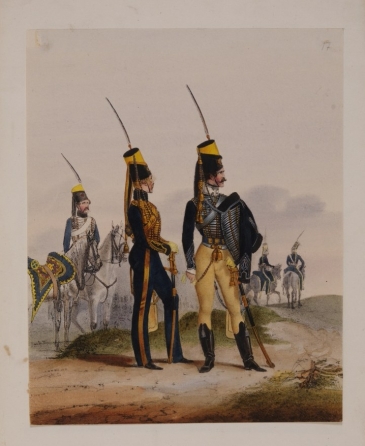
The three hussar figures depict different legwear too. One figure wears buff leather breeches and Hessian boots (as in the figure above right). The two other figures are wearing blue overalls with, curiously, black leather knee patches – these can be seen in the Knotel print seen previously.
HaT, I’ve said before, are a manufacturer with an impressive range of topics. The sculpting runs short of the tremendously high quality of Zvezda or Italeri at their best, in my opinion. However, the figures are still neatly done and I think this Swedish set looks like they could be fun to paint. The most marked difference between HaT and Zvezda can be seen in the horses, I think, an area where Zvezda’s sculpting really excels whereas HaT is simply OK.
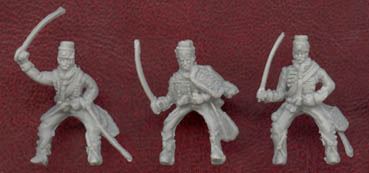
Nevertheless, with the kind of diversity such as HaT have packed into this box, I’m looking forward to developing them and seeing how they turn out. Furthermore, this is the first time in the project that I’ve attempted a regiment from Sweden, adding further variety to my collection. Having already made a start I’ll be updating as soon as I have something worth sharing!

